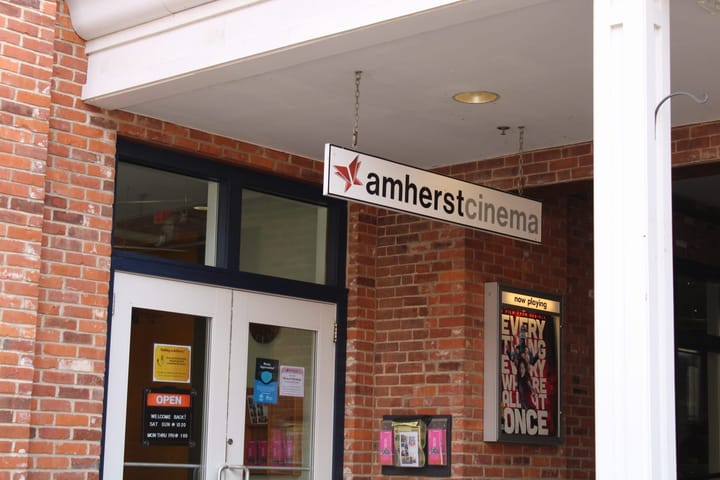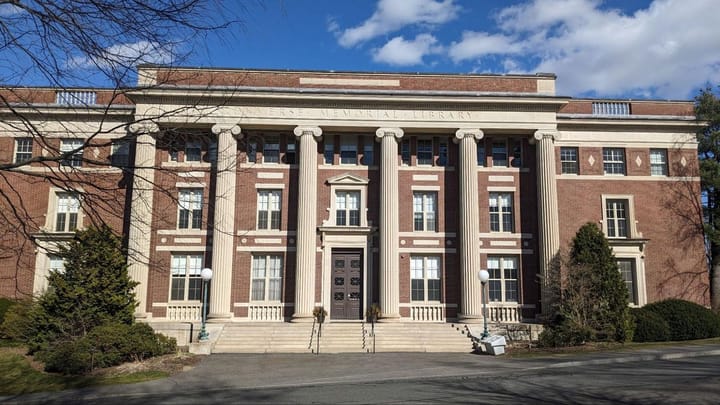Full Student Return Provides Major Boost to Town Economy
The return of students to fully in-person semesters at UMass Amherst and Amherst College has provided a major boost to the town economy. Even so, business is still not back to pre-pandemic levels, and concerns remain among business owners over safety risks posed by the Delta variant.


Students are back in the Town of Amherst, stimulating the recovery of the local economy. UMass Amherst and Amherst College are nearly a month into the fully in-person academic year and so far, it appears the influx of students has provided a major boost to the local economy, though business is still not back to pre-pandemic levels.
The beginnings of Amherst’s economic downturn can be traced back to early March of 2020, when the virus first began to spread. On Mar. 9, Amherst College sent students home and UMass followed four days later. Businesses like Antonio’s Pizza, the local branch of CVS and Amherst Books were decimated.
Amherst Books, a “non-essential business,” was closed, and forced to lay off the majority of its staff. Most other local businesses did the same.
Sales plummeted. Before the pandemic, Sterlen Deplata, operation manager at CVS, said they would see between 50 and 100 customers per hour; during the pandemic, these numbers dropped to 20 to 30. Shannon Ramsey, co-owner of Amherst Books, reported sales being down by 75 percent. Aidan Lyons, assistant manager at Antonio’s pizza, saw sales drop from around 1000 or more orders a day to just 400.
With UMass and Amherst now fully-in person for this school year, local businesses are beginning to see more customers come through their doors.
Ramsey is pleased to see that students are browsing in person again: “It’s been nice to have everyone back,” she said. Unfortunately, even upon the return of students, business still is not where it used to be.
Ramsey said that sales at Amherst Books have only rebounded to about 50 percent of pre-pandemic levels. She partially attributes the slow return of business to a lack of events. “In the pre-pandemic, we had 170 events every year,” she said. Especially in the busiest seasons, like in the beginning of the fall and mid-spring, we would have events every single day.”
Although Amherst Books put on their first post-pandemic event last week, Ramsey isn’t sure if events will be held as often going forward. Continued hesitancy surrounding the pandemic and a restructuring of the aisles to facilitate social distancing (which placed shelves in the open area in which events used to be held) has made gatherings more difficult to put on.
Stores like Antonio’s and CVS have seen greater rebounds since the start of the school year. “We've seen upwards of five to 800 more orders a day,” says Lyons, assistant manager at Antonio’s. Lyons continued, “On weekends, we're doing really well. But we're still not quite seeing the numbers that we used to do during the weekdays.”
The experiences of these downtown businesses seem to reflect the general trends throughout the greater Amherst area.
According to Claudia Pazmany, Executive Director of the Amherst Area Chamber of Commerce, “most restaurants and businesses are still at 50 percent of where they were pre-Covid,” which is up from last year, when most establishments saw only about 25 percent of normal business.
Still, the increased business has caused growing demand for employment. To accommodate the rise in business, CVS went on a hiring spree. “We went from a crew of about six or eight people. And now we have about a total of 20 people on staff,” said Deplata.
After Hampshire County unemployment spiked as high as 12.5 percent last year, it has been gratifying for managers to grow their workforces again. “It feels good to be able to, you know, hire more people and get more people paid,” said Lyons.
With the elevated demand for labor, some employers in the area have struggled to fill certain roles. Ramsey said that Amherst Books has had to cut down on some of its late-night hours, which it found especially difficult to staff.
Pazmany, from the Chamber of Commerce, attributes much of the slow recovery across the region to these staffing struggles.
Although things seem to be getting closer to the pre-pandemic normal in Amherst, businesses will retain some practices that they adopted over the last 18 months. Antonio’s, for example, developed a system for in-house deliveries, which they will continue to use going forward. Deplata stated that some sanitation practices adopted to stop the spread of Covid will continue into the foreseeable future at CVS.
Pazmany stated that the majority of businesses now use social media for marketing, whereas before the pandemic, most businesses had little to no presence online.
Despite some optimism, Amherst businesses sense that the pandemic is yet to be over, especially given recent concerns over the Delta variant. Businesses do not necessarily fear another complete shutdown but are still anxiously watching the numbers.
Local workers are also still engulfed by the daily anxieties that accompany laboring in a pandemic. For example Deplata has the same trepidations each time that a customer approaches the register. Internally she questions individuals who are shopping for cough medicine and other flu/cold products. “You question people who come up with cough medicine and stuff like that.You’re constantly wondering, ‘Oh, does that person have Covid?’”





Comments ()